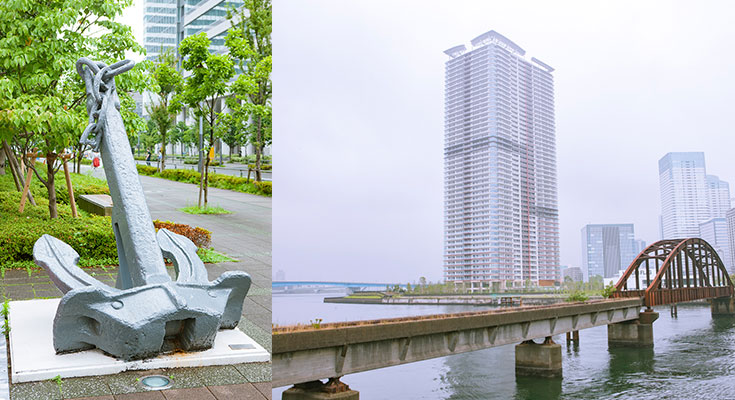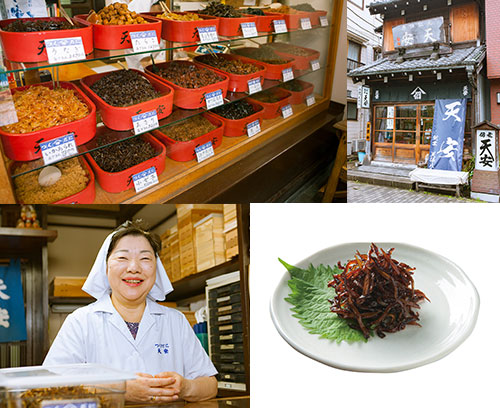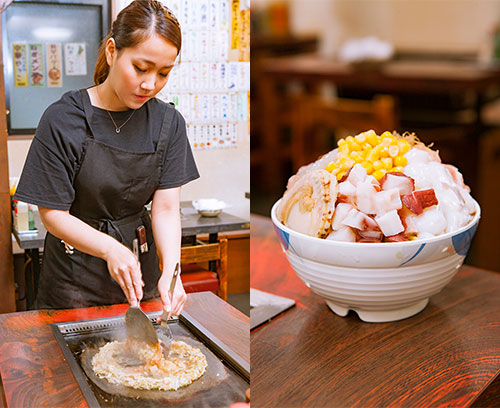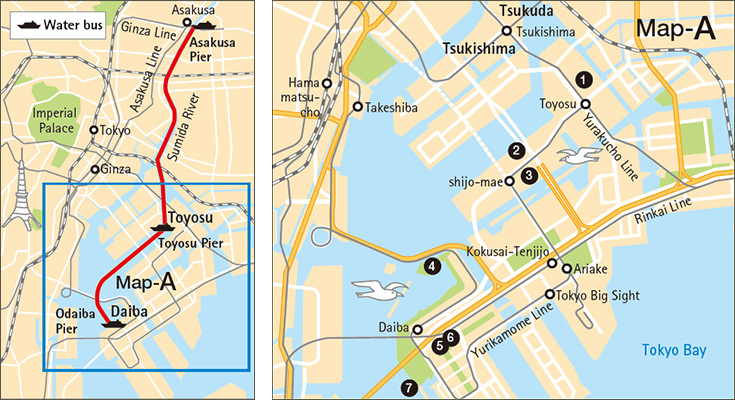niponica is a web magazine that introduces modernJapan to people all over the world.
2019 NO.27
 Strolling Japan
Strolling Japan
Toyosu, on the other hand, is an area that was reclaimed from the sea as part of the efforts to dispose of the rubble from the 1923 Great Kanto Earthquake. Initially, it was an industrial zone occupied mainly by shipbuilding yards. A tour of the streets of Toyosu will give visitors the chance to see numerous industrial remains, such as the old Harumi Railway Bridge, which carried the line that linked the docks with the freight station. Art monument installations featuring repurposed ship anchors and screws are displayed at 57 locations throughout Toyosu, making the island a popular recreational spot for couples and families with children alike.
In recent years, residences have also been developed on Toyosu. Clusters of high-rise condominiums are turning it into one of Tokyo’s booming neighborhoods. Theaters and sports facilities are being built as part of the urban development inspired by the concept of “Sports x Art.” For instance, Toyosu Gururi Park, a U-shaped park with a total length of approximately 4.5km along Toyosu Warf, is gaining popularity as one of Tokyo’s best places to jog. Another unmissable attraction is the Toyosu Market, which opened in 2018. Tourists from all over the world are warmly welcomed there and can enjoy the market action at the various observation spots.

Toyosu is home to numerous industrial artifacts, such as art monuments featuring repurposed ship anchors (left), and the old Harumi Railway Bridge (right). These symbolize Toyosu’s history as a once flourishing shipbuilding area.
The Shin-toyosu Brillia Running Stadium embodies Toyosu’s future urban development theme, “SPORTS x ART.”
Visitors with enough time to spare would do well to consider extending their trip to the nearby islands of Tsukishima and Tsukuda. Charming traditional neighborhoods are preserved at the foot of high-rise condominiums, giving visitors the opportunity to soak in the atmosphere of Tokyo’s olden days. In Tsukishima, there is a street lined with restaurants that offer the famous local dish monjayaki, a delicious concoction of batter, meat and vegetables. Tsukuda is known for the time-honored shops that continue to make tsukudani (literary “Tsukuda-simmered”), a preserve made of seafood, vegetables, seaweed, etc., simmered in soy sauce and sugar, and named after the island where the food originated. There, visitors can sample the traditional flavors of Tokyo.
Odaiba and Toyosu continue to evolve as the new face of Tokyo, and at the same time they preserve ubiquitous mementos of local history. Compare the rich and expressive faces of the city—one traditional and one modern—as you enjoy a stroll through these areas.

Tenyasu Honten, a historic tsukudani store established in 1837. Tsukudani is a preserve made of shellfish, seaweed, small fish, and other ingredients simmered in soy sauce and sugar.

Left: Monjayaki is a concoction of watery batter, meat, vegetables, and seafood, grilled on an iron plate. Monkichi is a well-known restaurant, famous for batter made using its secret broth.
Right: Ingredients for making monjayaki

Map of the Odaiba and Toyosu Area
①Industrial artifacts ②Shin-toyosu Brillia Running Stadium ③Toyosu Metropolitan Central Wholesale Market ④Daiba Koen Park ⑤H.L.N.A Sky Garden ⑥The Gundam Base Tokyo ⑦Tokyo International Cruise Terminal
●Access
Approx. 60 minutes from Narita Airport to Asakusa by the Access Express on the Keisei Narita Sky Access Line. The cruise times from Asakusa are approx. 50 minutes to Odaiba Marine Park and approx. 70 minutes to Toyosu.
●Contact information
Tokyo Cruise (Water Bus)
https://www.suijobus.co.jp/
The Official Tokyo Travel Guide GO TOKYO
https://www.gotokyo.org








